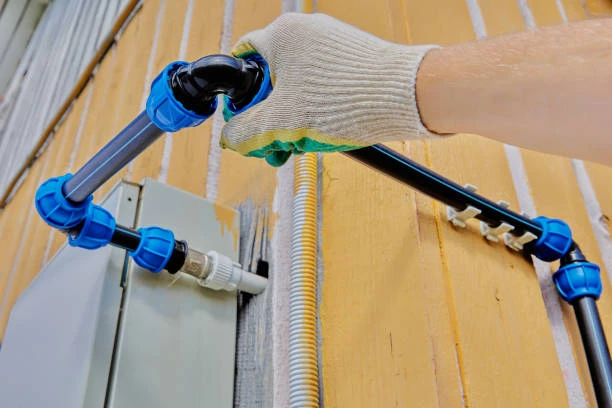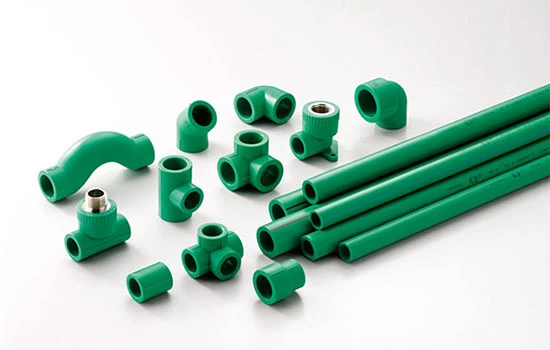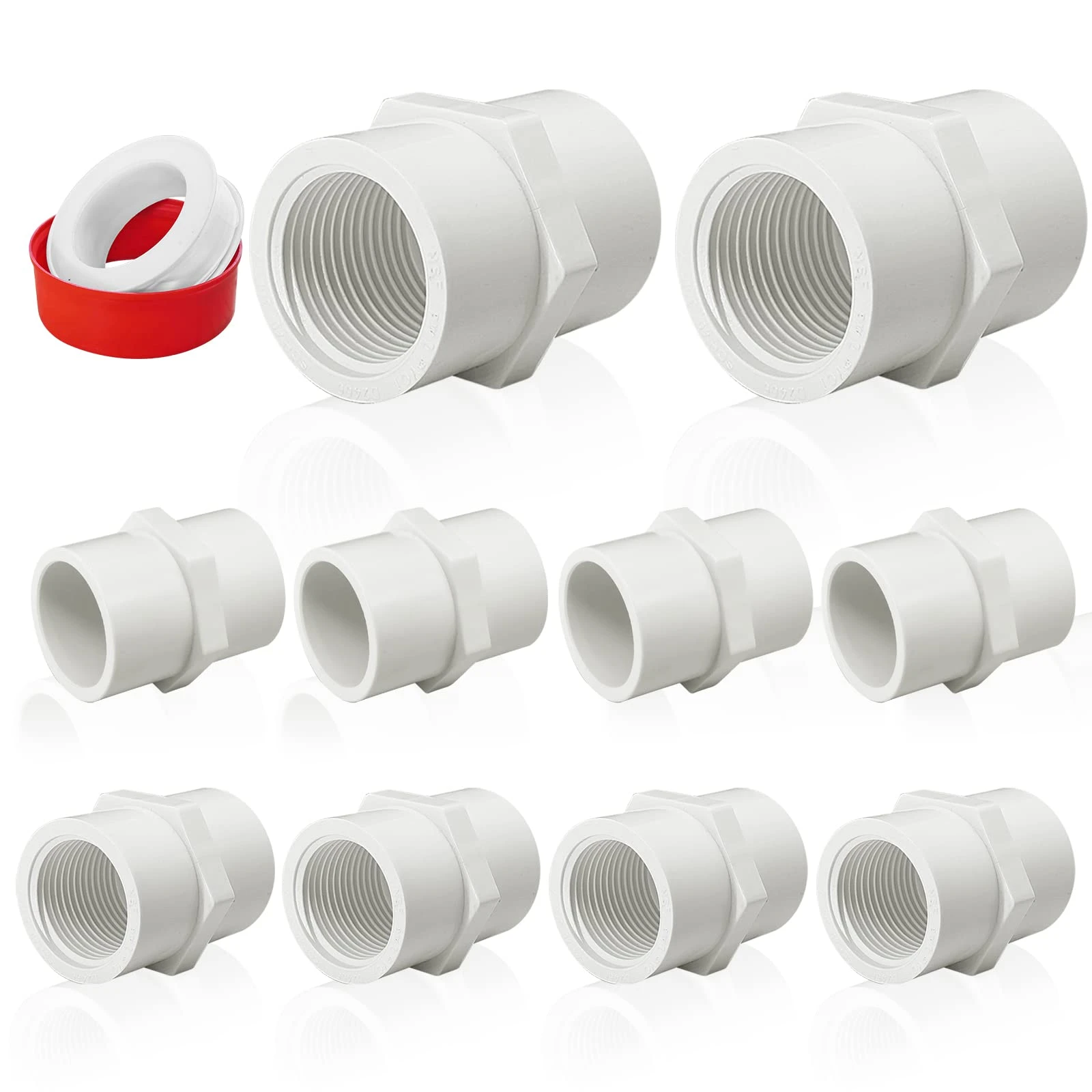1. Cost-Effective
One of the most significant advantages of plastic pipe fittings is their affordability. Compared to metal fittings, plastic options are much cheaper, making them ideal for both large and small-scale projects. The lower material cost allows contractors and homeowners to complete plumbing and piping systems without breaking the bank.
2. Lightweight and Easy to Handle
Plastic pipe fittings are lightweight, which makes them easier to handle and transport compared to metal fittings. This ease of use translates to lower labor costs and quicker installation times. Whether you’re working on a residential plumbing project or a large-scale industrial setup, plastic fittings are easy to maneuver, reducing overall effort and time.
3. Corrosion-Resistant
Unlike metal fittings, plastic pipe fitting do not rust or corrode when exposed to water, chemicals, or various elements. This makes them particularly useful in applications where the piping system is exposed to corrosive substances or extreme environmental conditions. Corrosion-resistant properties ensure the longevity of the piping system, reducing the need for frequent repairs or replacements.
4. Durable and Long-Lasting
Plastic pipe fittings offer long-lasting durability. They can withstand a wide range of temperatures, pressures, and chemical exposures without breaking down or degrading over time. This makes them suitable for both hot and cold water systems, as well as industrial applications that involve corrosive materials.
5. Flexibility
Certain types of plastic fittings, such as PEX, are highly flexible, which provides a huge advantage in plumbing systems. Flexibility allows the piping to be routed around obstacles without the need for multiple connectors or joints. This reduces the risk of leaks and simplifies the installation process.
6. Low Maintenance
Once installed, plastic pipe fitting require minimal maintenance. Their resistance to corrosion and scaling ensures they retain their integrity over time, reducing the need for regular inspections or repairs. This makes them ideal for long-term plumbing systems that need to function without frequent interruptions.
7. Environmentally Friendly Options
Many plastic pipe fitting, such as PVC and PEX, are recyclable, making them an environmentally friendly option. Additionally, the production of plastic fittings typically consumes less energy compared to metal, further reducing their environmental footprint. As the demand for green infrastructure grows, more industries are turning to recyclable and sustainable plastic materials.
8. Versatility in Applications
Plastic pipe fittings can be used in a wide range of applications, including residential, commercial, industrial, and agricultural systems. They are suitable for both hot and cold water systems, drainage systems, irrigation systems, and chemical transport. The ability to handle various fluids and gases makes them indispensable across many industries.
Applications of Plastic Pipe Fittings
1. Residential Plumbing
Plastic pipe fitting are extensively used in homes for plumbing systems, offering efficient water distribution for both hot and cold water. PEX and CPVC fittings are particularly popular in this category due to their flexibility and high heat resistance.
2. Irrigation Systems
In agriculture, plastic fittings are widely used in irrigation systems due to their ability to handle water flow efficiently and resist degradation from sunlight and chemicals commonly found in fertilizers.
3. Industrial Systems
For industries that require the transport of chemicals, gases, or water, plastic pipe fittings are the preferred choice due to their chemical resistance and ability to withstand high pressure.
4. Heating Systems
Plastic pipe fitting, particularly CPVC, are used in heating systems as they can handle high temperatures without degrading. This makes them ideal for hot water systems in both residential and commercial buildings.
Comparison with Metal Pipe Fittings
1. Cost
While metal fittings, such as copper and steel, offer strength and durability, they come at a higher cost. Plastic fittings are far more affordable, making them a better option for most standard applications.
2. Weight
Plastic fittings are lighter than metal, making them easier to transport and install. The lighter weight also reduces the overall strain on the piping system, especially in larger setups.
3. Corrosion and Rust
Metal fittings are prone to corrosion and rust, especially when exposed to water or chemicals over long periods. In contrast, plastic fittings are corrosion-resistant, offering longevity without the risk of rust.
4. Environmental Impact
While both metal and plastic can be recycled, the manufacturing process of plastic fittings consumes less energy compared to metals like copper. This makes plastic fittings a greener alternative in terms of production energy use.
Environmental Considerations
While plastic is often criticized for its environmental impact, advancements in technology have made it possible to recycle many plastic pipe fitting. Manufacturers are also focusing on producing fittings that are more eco-friendly, reducing waste and ensuring that the materials used have a lower environmental footprint.
Moreover, plastic pipe fittings last longer than many other materials, which reduces the frequency of replacements and the associated environmental impact of manufacturing new fitting.

Future Trends in Plastic Pipe Fittings
The demand for plastic pipe fitting is expected to grow in the coming years, driven by advancements in material technology and a shift towards sustainable infrastructure. With increasing urbanization and the need for efficient plumbing systems, the use of plastic pipe fitting will continue to rise in both residential and industrial applications.
Conclusion
Plastic pipe fitting offer numerous benefits, including affordability, durability, and ease of installation. Their versatility and resistance to corrosion make them suitable for a wide range of applications, from residential plumbing to industrial systems. As industries move towards more sustainable and cost-effective solutions, plastic pipe fittings are expected to remain a popular choice.
FAQs
- What makes plastic pipe fittings better than metal fittings?
Plastic pipe fittings are more affordable, lightweight, corrosion-resistant, and easier to install compared to metal fittings, making them ideal for many applications. - Which plastic pipe fitting is best for hot water systems?
CPVC (Chlorinated Polyvinyl Chloride) and PEX are best suited for hot water systems due to their higher temperature tolerance. - Can plastic pipe fittings be used in industrial applications?
Yes, plastic pipe fittings, especially those made from materials like HDPE and PP, are widely used in industrial applications due to their resistance to chemicals and durability. - Are plastic pipe fittings environmentally friendly?
Many plastic pipe fittings are recyclable, and advancements in production technology have made them more eco-friendly, reducing their environmental impact. - Do plastic pipe fittings require maintenance?
Plastic pipe fittings require minimal maintenance due to their resistance to corrosion and scaling, making them a long-lasting and reliable option.


















